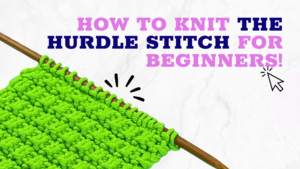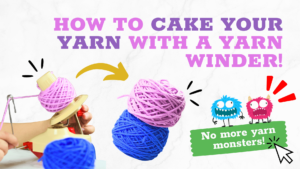Knitting vs Crochet
Which is easier, knitting or crochet?
Which is easier, knitting or crochet?

One of the most common crafting questions we get from newbies is: knitting vs crochet, which one is easier!? There are so many fantastic things about both crafts and we recommend learning both. However, if you’re pinched for time we’ve got a whole post about the difference between knitting and crocheting and the similarities between these popular crafts.
Today, we’ll share how crochet vs. knit projects use yarn to create fabric, the common tools for each, and also what sort of projects tend to be the most popular for knitting vs crochet.
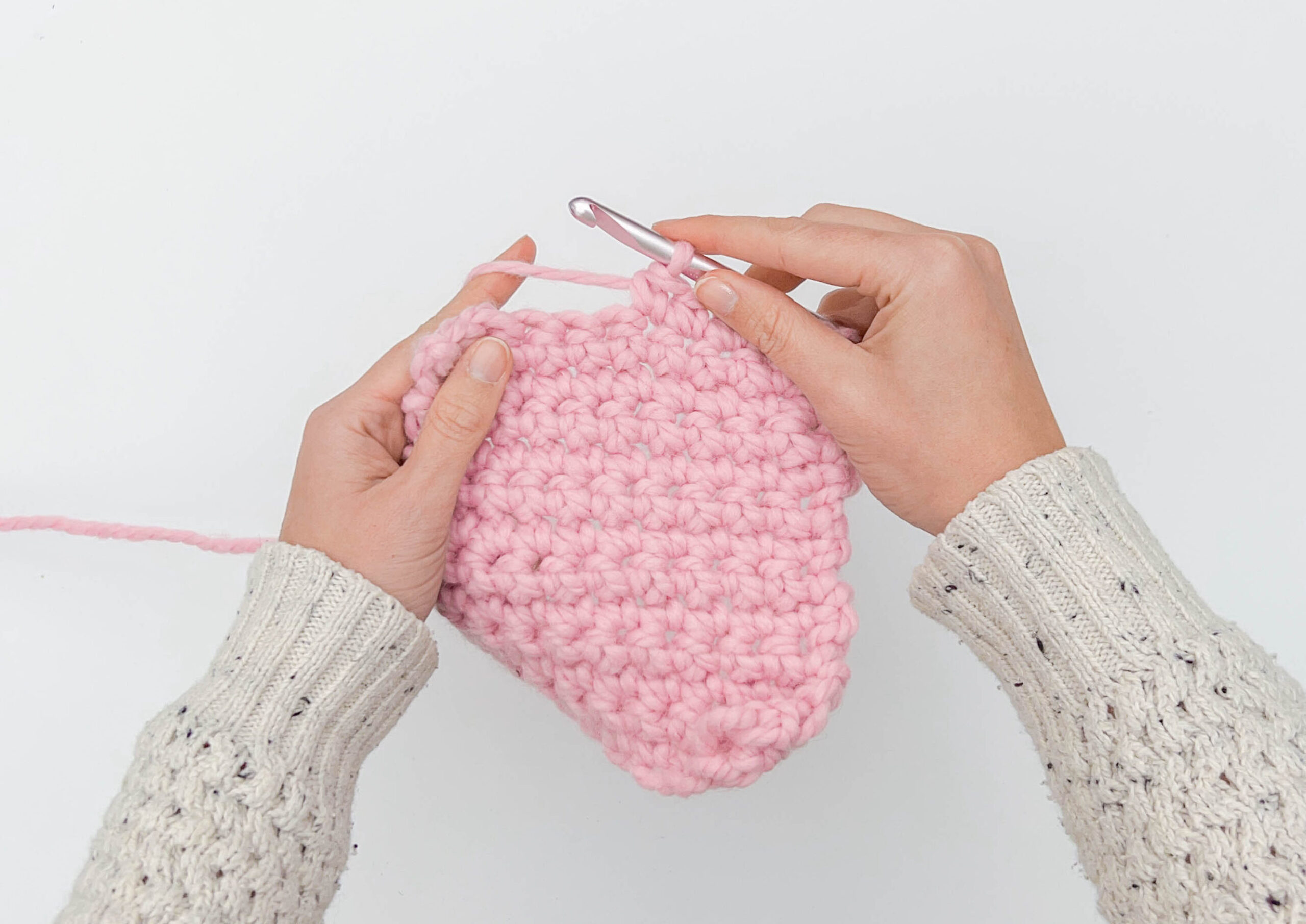
At its most basic, crochet uses yarn and a single hook to create a range of fabrics. For most stitch patterns, the crochet hook draws the yarn through a single loop on the hook at any given time. The hook is inserted into the fabric in order to pull the yarn through creating a new stitch that is then chained, or pulled through the previous stitch. The number of times the yarn is hooked (or “chained”) and the way the hook is inserted determines how the finished fabric looks.
For some people, crocheting is easier than knitting. Most crochet stitches use a single active loop of yarn at any given time on the hook which makes it easy to pick up and put down a project.
In crochet, where you insert the hook determines where the next stitch is formed in the fabric. In knitting, the active stitches are on the knitting needles all of the time. The simplicity of a single active stitch (or just a few at any one time) makes crochet an easier craft to approach as a newbie. The trickiest part of crochet is understanding where to insert the hook or how to create a new stitch properly and, really, that’s half the fun!
Crochet is a great craft for summer months or warm climates for two reasons. When crocheting you don’t have to hold as much fabric as you work so it’s easier to stay cool as you work. Crochet also favors cotton yarns which are naturally cool and crisp to the touch. That being said, you can absolutely crochet cozy projects in warm yarns too!
Compared to knitting, crochet typically creates taller stitches and can create a lot of length very quickly using the same size yarn.
Crochet also creates a “double thick” fabric compared to knitting. The fabric tends to be super cozy and can also be a stiffer material compared to knit fabric. To balance the extra thickness, crochet patterns will typically use open spaces between stitches to add additional drape and create an airy fabric.
With just one active loop (typically) and a hook to manage, crochet projects are easy to pick up and start working right where you left off without a lot of guesswork. Unlike knitting, if your hook manages to slip out of the active stitch it’s easy to reload the stitch onto the hook.
There’s a reason super cute amigurumi creatures are so popular in crochet. Because you’re working with just one stitch, or a few stitches at a time when crocheting, it’s easy to manipulate fabric and build 3D shapes. A single crochet hook with just one or a few stitches active at a time is far more maneuverable compared to a pair of knitting needles with many stitches going at once!
As you form a new stitch in crochet you’re also locking in the previous stitch. This means that it’s also impossible for a crochet project to unravel on its own! Worst case, you might lose a few stitches if the hook falls out and your project is jostled around in a bag, but you’re in no danger of having a large amount unravel unexpectedly!
Compared to knitting, crochet uses about 1/3 more yarn for the same size project. This means big blankets can be quite a commitment and require a big pile of yarn to finish.
Most crochet stitches are formed by chaining loops of yarn. Compared to knit stitches, crochet chains are dense and create a stiffer fabric. In order to create fabrics that are open and drape nicely crochet stitches leave open space between stitches to let the yarn relax. Naturally, this makes it harder to create a solid fabric that also drapes nicely or feels comfortable to wear as a single layer.
If you want to make socks or stretchier fabrics like ribbing you’ll have quite a challenge with crochet. There are a few stitches that will have slightly more stretch and give, however a truly elastic fabric isn’t in the cards for crochet. And that’s ok! Knowing that springy recovery isn’t crochet’s strong suit will make it easier to pick projects that play to the various, fantastic strengths of this timeless craft.
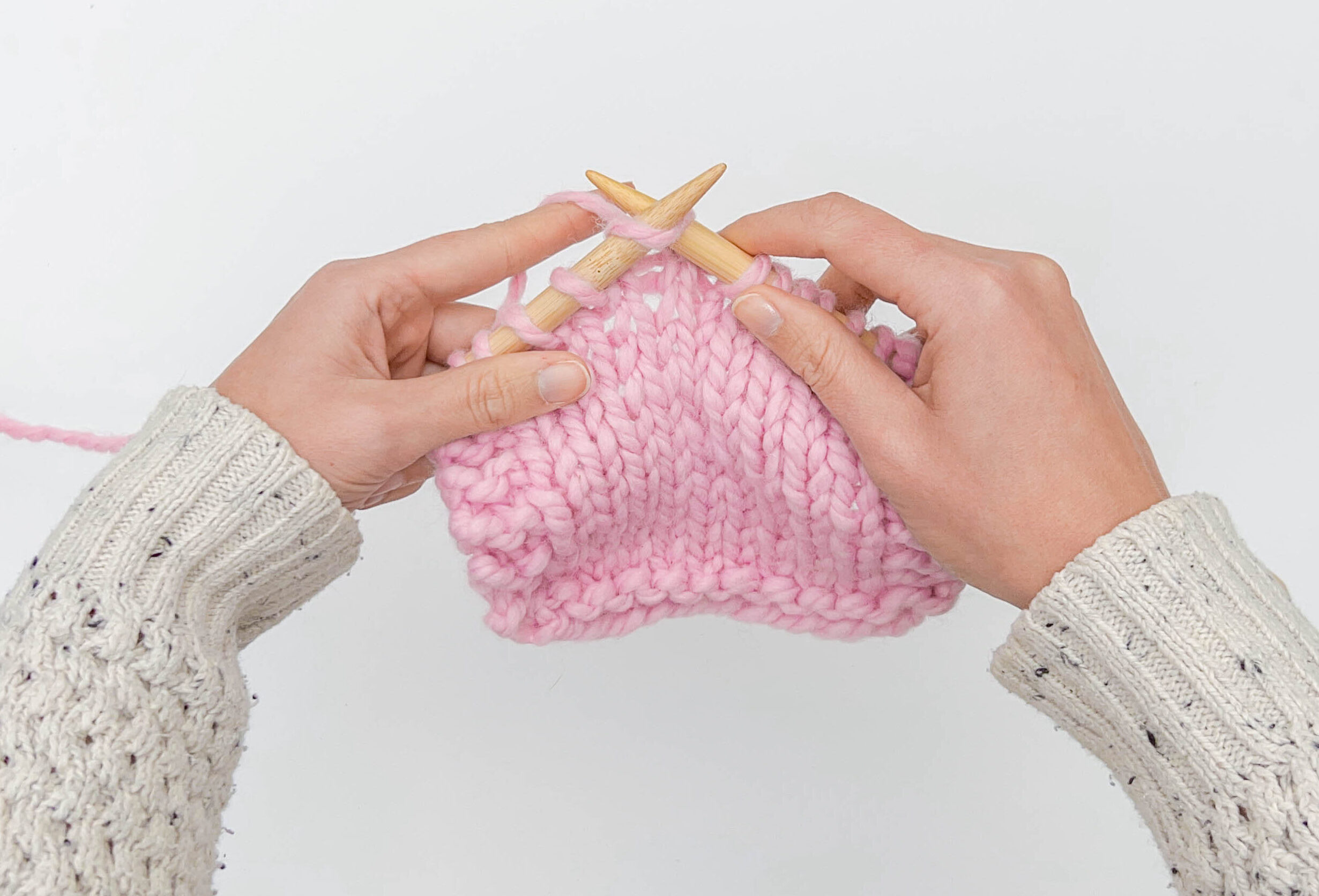
Knitting uses two pointed needles, yarn, and both hands working at the same time to create fabric. While crochet uses a single active loop, knitting involves creating a whole row of loops on knitting needles (also called stitches) that are active during every row. New yarn is looped through each stitch to create length to your fabric. The way the yarn is knitted in each row (the direction, the number of loops, etc.) determines how the fabric looks.
Compared to crochet there are quite a few things to keep track of all at once in knitting which can feel pretty intimidating. Even choosing the right knitting needles and yarn can feel tricky! It’s true that knitting can be a little harder to pick up and feel confidently crafty right away. However, once you practice on a few small projects (hello, dishcloths!) you’ll have all the basics down and knitting won’t feel any more complicated than crochet.
One of the most useful and functional aspects of knit fabric is the yarn’s ability to stretch, relax, and recover with a huge range of motion. Most knitting stitches, especially the most common ones, create a fabric that is just one strand thick with the loops facing outward and lying flat. This means that the yarn can be knit tightly and yet still has space and length to stretch and recover within the fabric.
Knitting socks, ribbing or stretchy projects is a breeze! Some knit stitches like ribbing, brioche, or garter stitch are specifically designed to have extra built-in stretch and recovery.
Getting a stretchy fabric is easy when knitting, however finding a an edge technique that matches the elasticity of the rest of the fabric can be quite a challenge. Luckily knitters have been hard at work creating all sorts of unique super stretchy cast ons and bind offs that there are quite a few finishes to choose from!
Because knitting uses a series of stitches that are “live” on the needles all of the time, accidentally dropping a stitch at the wrong time can sometimes mean that a section of your project unravels. While it’s easy to fix, it can be an intimidating thing to happen! Luckily fixing a dropped stitch is easy.
Creating complex 3D shapes is trickier in knitting than in crochet. Having all of the active stitches loaded onto two needles for knitting means that it can be hard to maneuver between small areas. Don’t worry though! By using a combination of knitting needles you can make the process easier and still make all sorts of cute stuffies or elaborate embellishments in knitting.
Because you’re essentially holding your whole project in both hands while you knit it can be a sweltering craft to work on when the temperature soars. Switching to a cool, crisp cotton yarn and smaller projects can help to beat the heat. However, in warm weather crochet really shines. With fewer stitches and less fabric held in your hands, crocheting even large afghans in the summer is a more enjoyable process than most knit projects.
For anyone experiencing stiff or achy joints knitting can be a hard craft to work on. For the same reasons, it’s not a great hobby during hot weather, having to hold your project in both hands and shift it around as you work can strain your upper body. For all crafts and knitting in particular we recommend taking tons of breaks to stretch!
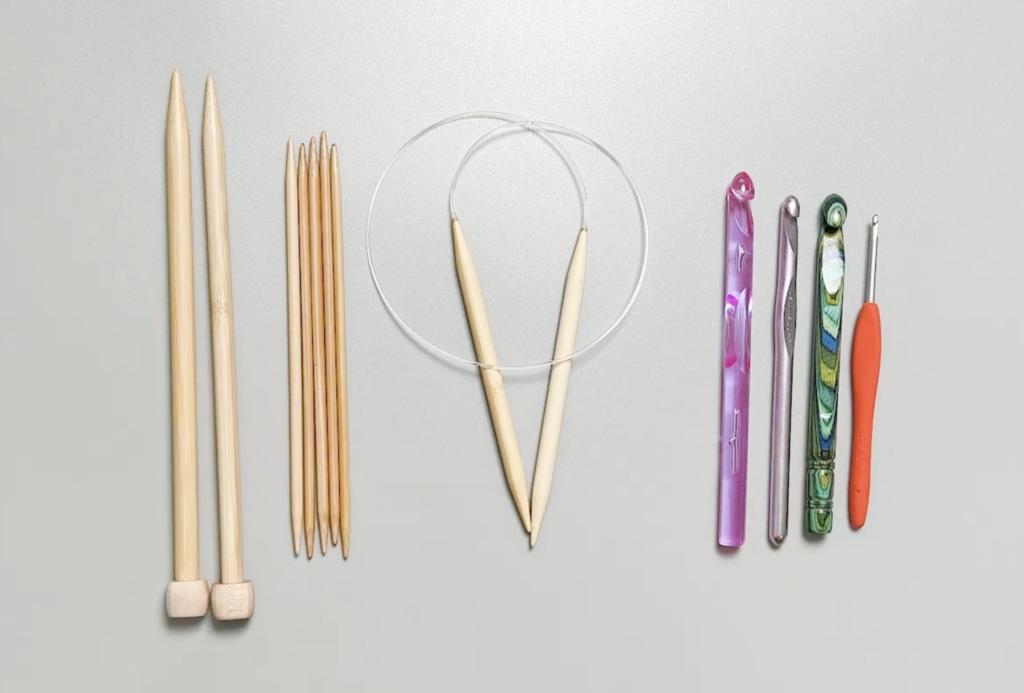
A good place to start learning the difference between knitting and crochet is the tools you use to form stitches!
Knitting needles come in a wide variety of very different formats suited for different project types. Crochet hooks have subtle variations that are more of a personal choice than dictated by the project you’re working on.
Today we’ll look at the most common styles as well as the pros and cons of the different materials used to make needles and hooks.
While there are many kinds of knitting needles to choose from, they all have one thing in common: pointed ends! There are three major categories of knitting needles: straight knitting needles, circular knitting needles, and double-pointed knitting needles (aka: DPNs).
Straight needles feature a single pointed end and an end cap on the other. The pointed tip is used to create stitches while the end cap keeps the stitches on the knitting needle (no dropped stitches here!). Straight needles are used to knit flat pieces by working back and forth. They’re the most traditional type of knitting needle and are great for projects like scarves that are small and flat.
Circular needles come in two styles (interchangeable or fixed) and feature two needles connected together by a length of cord. The flexible length makes it easy to do both super wide flat projects (hello, afghans!) or tubular projects like hats or sweaters. You can choose the size of the needles and the length of the cable to match a range of projects making these the most flexible, all-purpose needle type in knitting.
Double-pointed needles (aka DPNs) are designed to work with small circumference projects. Think hats, mittens (especially the fingers!), and socks. These needles feature two pointed ends and are arranged in a circle. To work around the needles, you knit across each one individually in a clockwise direction jumping from one needle to the next as you work the stitches loaded onto each. There is a drawback to this style: it can be easy to drop stitches off the needles if there are too many on each needle (or the yarn is slippery) and you’re limited to the diameter of your project.
The list of common crochet tools is short and sweet. To get started crocheting you just need yarn and a hook, that’s it!
While there are a few subtle differences between crochet hooks such as head shape (pointed or rounded) and the throat space (the angle of the hook opening), the main consideration is the ergonomics of the handle or the material of the hook. Look for a hook with an ergonomic handle for long-term comfort or stick with a smooth barrel crochet hook for speed.
The most common knitting needle and hook materials are the same for both crafts! Most knitters and crocheters will have a collection of hooks and needles in a wide variety of materials. Each one is picked because they work well with different yarns or project types, with a big dash of personal preference thrown in for good measure.
Wood is warm, slightly flexible, and has a moderate amount of traction on yarn fibers. We recommend wood for slippery yarns especially since it has just enough friction to keep stitches in place but not so much that it’s hard to slide them off your hook or needle. Wood knitting needles are especially great because they offer a particularly quiet knitting experience. No more click-clacking needle tips!
Aluminum tools are lightweight and stay cool to the touch. We tend to grab aluminum versions of knitting needles and crochet hooks for the smaller sizes since the aluminum is super sturdy and won’t break or snap. Most importantly for knitting, aluminum needles can hold a very sharp tip which makes them the perfect choice for projects with extra tight stitches or “sticky” yarns like heavy wools.
We love choosing acrylic crochet hooks and knitting needles when we’re looking for fun, bright colors. They’re also typically more affordable than some of the other materials. Acrylic or plastic tools are a great choice for slippery yarns. Acrylic naturally has a “grabbier” surface which means slick fibers stay on the hooks and needles.
As always, we recommend that you try all the needed materials out to see what you like best! Every project is different and you can collect a lovely selection of whatever knitting needles suit your craft style.
Today we’ve covered the similarities and difference between knitting and crocheting for new crafters. We love both crafts for the unique fabrics and projects you can make using yarn and we’d argue that both crafts are handy to learn.
We think the question around knitting vs crochet shouldn’t be “Which is better?” and should instead be “Which one should I reach for next?”. Knowing how to do both means you can switch from one craft to the other. Changing crafty gears allows you to either give tired muscles a break or, as the weather changes, each for the most comfortable craft for that moment.
There are even some projects that use both knitting and crochet! Try knitting the stretchy cuffs and neckband for a crocheted sweater, or use crochet to embellish knit projects. Learning how to use both knitting needles and crochet hooks unlocks a whole world of possibilities!

Ready to cast on for your first project? Check out our collection of beginner knitting tutorials!

